Sometimes things just seem to fall into place
Over the summer we took a group of makers from area schools, Betty Brinn, and MIAD down to Goodwill’s E-Cycling facility for a tour of the facility and to do a bit of shopping. After seeing the kind of material that comes through the E-Cycling program, we sat down with their folks to talk through the types of equipment that would have parts that could be useful to makers. It didn’t take much time for Goodwill to set aside a pallet full of material for us to play with.
In August we held a pallet party at MIAD for a small group of educators and students to take apart equipment (typewriters, sewing machines, DVD players, old phones, etc.) that had come through Goodwill’s E-Cycling program. The goal was to find the parts that would be useful in school makerspaces and return the un-used material to Goodwill’s recycling stream. At the time, Ben Dembroski, our host at MIAD, suggested that it would interesting to see if we could engage Milwaukee area students to document how to take different pieces of equipment apart and where the useful parts are.
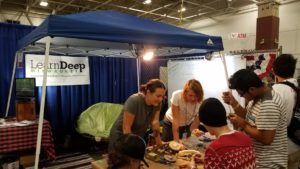 In September we took the equipment we had left to Maker Faire where we were mobbed for three days by kids wanting to take stuff apart. A number of educators who stopped by the booth asked if we could do something like this at their school.
In September we took the equipment we had left to Maker Faire where we were mobbed for three days by kids wanting to take stuff apart. A number of educators who stopped by the booth asked if we could do something like this at their school.
In October we connected with Sharp Literacy, a local non-profit that uses the visual arts to build literacy and math skills. Some of the schools Sharp is working in are looking at ways to incorporate makerspace activity. They were intrigued by the idea of having students take apart equipment and illustrate it’s function within the device. AKA Forensic Illustration, AKA the first installment of Ben’s student-produced guide for how to take things apart.
We brought everyone together over lunch at MIAD and hatched a plan. We bring the equipment, MIAD provides student interns to help coach tear-down and illustration work, Sharp Literacy opens time in their program for the effort and works with the students to guide the process. We hope to cap off the project with a tour of at MIAD where students can show off their work. Useful parts can stay at the school or go to another school that can use them; the rest get recycled.
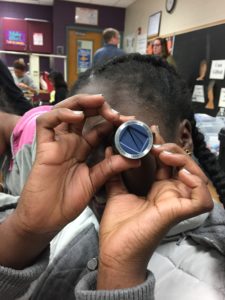 Last Tuesday we went out to Thurston Woods where students took apart DVD drives, a circular saw, printer, keyboard, camera, and a few other odds and ends in our collection. Today we were out at Browning Elementary to do more of the same. We were thrilled to see the students dive in and work together with little more instruction than “righty-tighty, lefty-loosey”.
Last Tuesday we went out to Thurston Woods where students took apart DVD drives, a circular saw, printer, keyboard, camera, and a few other odds and ends in our collection. Today we were out at Browning Elementary to do more of the same. We were thrilled to see the students dive in and work together with little more instruction than “righty-tighty, lefty-loosey”.
We knew from our experience at Maker Faire that students can get deeply engaged taking things apart. Our goal for these two sessions was to get a sense of the time required to take apart different pieces of equipment, and what the students found most interesting. We’ll use what we’ve learned so far to craft the approach we take when we kick off the forensic illustration project next semester.

 For this session, we split the attendees across 5 tables, where each participant shared their thoughts on key goals, and came together as a team to share those the felt were most important with the entire group. These included:
For this session, we split the attendees across 5 tables, where each participant shared their thoughts on key goals, and came together as a team to share those the felt were most important with the entire group. These included: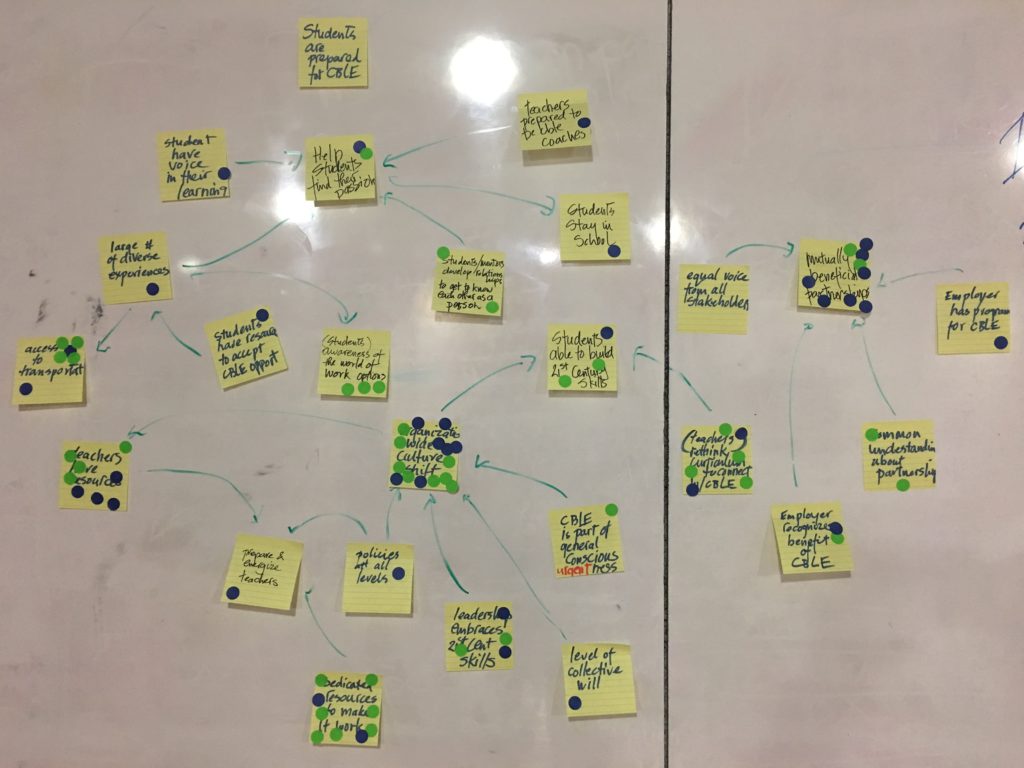
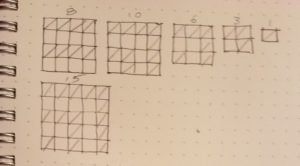 For our exercise, Gabriella asked us to play a game within a 4 x 4 grid. The rules of the game are pretty simple: You may put a single diagonal line running from corner to corner in any cell of the grid, so long as neither end point of that diagonal touches an end point of a diagonal in any adjoining cell. Go.
For our exercise, Gabriella asked us to play a game within a 4 x 4 grid. The rules of the game are pretty simple: You may put a single diagonal line running from corner to corner in any cell of the grid, so long as neither end point of that diagonal touches an end point of a diagonal in any adjoining cell. Go.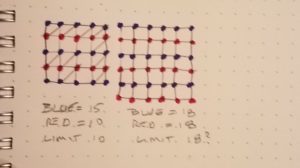 What else have we seen? Well, each diagonal we place uses up two potential end points on the grid. On a 4 x 4 grid, if we mark these potential end points as alternating rows of blue and red dots, starting with blue, we will have 3 rows of 5 blue dots and 2 rows of 5 red dots. With that pattern, every diagonal must touch a red dot. There are only 10 red dots, seems like a pretty good proof that 10 is the limit for a 4 x 4 grid.
What else have we seen? Well, each diagonal we place uses up two potential end points on the grid. On a 4 x 4 grid, if we mark these potential end points as alternating rows of blue and red dots, starting with blue, we will have 3 rows of 5 blue dots and 2 rows of 5 red dots. With that pattern, every diagonal must touch a red dot. There are only 10 red dots, seems like a pretty good proof that 10 is the limit for a 4 x 4 grid.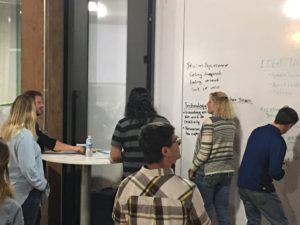 Bring King joined us for Collab Lab 13 to walk us through an exercise to identify problems worth solving at attendees’ schools. The idea was to give participants the feel for a process they could use with their students to identify challenges students could take on as authentic learning experiences. Thanks also go out to David Howell (MSOE/
Bring King joined us for Collab Lab 13 to walk us through an exercise to identify problems worth solving at attendees’ schools. The idea was to give participants the feel for a process they could use with their students to identify challenges students could take on as authentic learning experiences. Thanks also go out to David Howell (MSOE/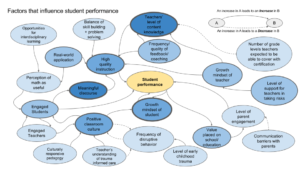

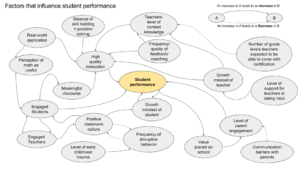
 Tuesday was pitch night at 88.9 for The Commons. The Betty Brinn/Learn Deep team shared their vision of CSA-farm-box meets up-cycling. The solution looks to offer schools a subscription service that delivers a mystery box of materials for use in a makerspace on a monthly basis. Great idea, go team!
Tuesday was pitch night at 88.9 for The Commons. The Betty Brinn/Learn Deep team shared their vision of CSA-farm-box meets up-cycling. The solution looks to offer schools a subscription service that delivers a mystery box of materials for use in a makerspace on a monthly basis. Great idea, go team!